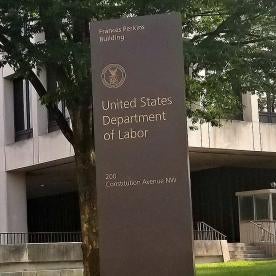We previously wrote about the Department of Labor’s proposed expansion of its safe harbor for electronic delivery of certain retirement plan disclosures required under ERISA. The wait is finally over, with publication of the final rule (the “New Rule”) helped along by the DOL’s desire to alleviate some of the “disclosure-related problems being reported by a great many retirement plans” during the COVID-19 pandemic.
Plan administrators have long bemoaned the narrow parameters of the DOL’s current safe harbor for electronic delivery (the “2002 Safe Harbor”), which requires that plan participants have work-related computer access or provide affirmative consent to receive their ERISA disclosures electronically. This safe harbor rule became effective well before smartphones and tablets made it much easier for plan participants to access email and company intranets—and the benefit plan document that might be posted there—at any time and from anywhere.
The New Rule establishes another voluntary safe harbor for retirement plan administrators who wish to furnish “Covered Documents” to “Covered Individuals” electronically as the default means of delivery. (Though the New Rule is undoubtedly good news for retirement plan administrators, it is important to point out that the New Rule applies only to retirement plan disclosures, and welfare plan administrators may utilize the 2002 Safe Harbor only until further guidance is issued by the DOL.)
For the New Rule, a “Covered Individual” is a participant, beneficiary, or other individual entitled to Covered Documents who has provided, or has been provided with, an electronic address. This includes an email address or internet-connected mobile-computing-device (e.g. smartphone) number. “Covered Documents” include summary plan descriptions, summary of materials modifications, and pension benefit statements or information that the administrator is required to furnish to participants and beneficiaries.
Under the New Rule, electronic delivery can be the default method for distribution of Covered Documents unless a Covered Individual affirmatively opts out. The New Rule permits these two methods for electronic delivery:
-
Website Posting – Plan administrators may post Covered Documents on a website, if certain requirements are met.
-
Email Delivery – Plan administrators may send Covered Documents directly to the email addresses of Covered Individuals. The email must include specific language within the subject line of the email and a statement that briefly describes the content of the Covered Document.
The New Rule also protects Covered Individuals who may wish to opt-out of the electronic disclosures. Specifically:
-
Covered Individuals can request paper copies of specific Covered Documents or globally opt-out of electronic delivery entirely.
-
Covered Individuals must be furnished with an initial notification (on paper) of the administrator’s switch to electronic delivery.
-
Covered Individuals must be furnished a timely notice of internet availability each time a new Covered Document is made available for review on the internet website. The notice of internet availability may be sent via email or text message. The notice of internet availability must include, among other things, a hyperlink to the Covered Document and statement of the right to receive a paper version instead.
The New Rule is technically effective on July 27, 2020—60 days after its publication. The DOL, however, will not take enforcement action against plan administrators that rely on the New Rule before the 60-day period has expired. Administrators may also continue to use and rely on the 2002 Safe Harbor.





 i
i


